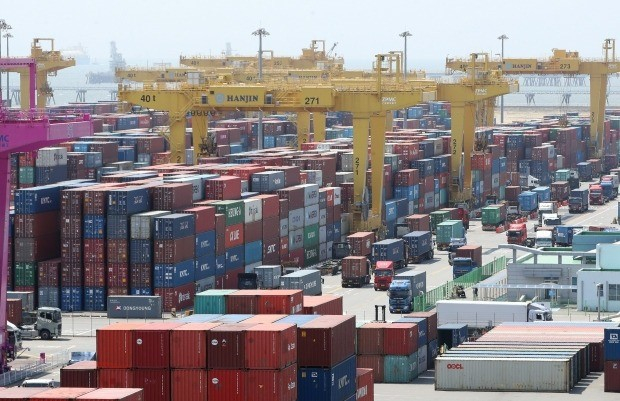South Korea’s economic growth rate dropped by 1 percent last year, its worst performance since the 1998 Asian financial crisis when the country's economy shrank by 5.1 percent.
Last year, Korea’s gross domestic product (GDP) reported around 183.1 trillion won ($1.7 trillion), down 1 percent from the previous year, according to data released by the Bank of Korea on Jan. 26.
The country's economic growth rate remained a bit higher than the projections from the Bank of Korea and the International Monetary Fund at minus 1.1% and minus 1.9%, respectively.
Korea's economic contraction is largely owing to the drastic drop in private expenditure, which accounts for almost half the country’s GDP. Last year, private consumption shrank by 5% compared to 2019, as people refrained from going out due to the COVID-19 pandemic – cutting back on dining and education costs, as well as curbing leisure activities such as going to the movie theater.
Asia's fourth-largest economy has posted a negative growth rate just twice in the past: in 1980 when the country was hit by the second oil crisis; and in 1998 during the Asian financial crisis.
Korea's export growth rate posted minus 2.5%, the lowest since 1989 when it shrank by 3.7%. Exports weakened as the pandemic led to the blocking of many export routes, alongside global production sites halting operations leading to a decline in product trade. The construction investment growth rate stood at negative 0.1 percent.
Meanwhile, the country's growth rate was aided by facility investment, which performed better than expected. The facility investment growth rate reported 6.8%, the highest since 2017 when it posted 16.5%.
By sector, the manufacturing production growth rate recorded minus 1%, the lowest since 2009 when it dropped to negative 2.3% in the wake of the global financial crisis. The service production growth rate stood at minus 1.2%, the lowest since 1998.
In 2020, Korea's growth rate posted minus 1.3% in the first quarter; minus 3.2% in the second quarter; 2.1% in the third quarter, and 1.1% in the fourth quarter. The country has shown some rebound after bottoming out in the second quarter.
Write to Ik-hwan Kim at
lovepen@hankyung.comDanbee Lee edited this article.




